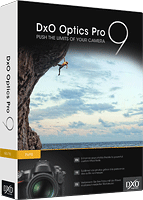DxO banishes noise from Panasonic GM1, Nikon AW1, iPhone 5s photos
posted Wednesday, January 15, 2014 at 4:54 PM EDT

When DxO Labs debuted its overhauled Optics Pro 9 image processing app last October, we immediately latched onto its amazing PRIME denoising engine as the key new feature. Whenever we've wanted to clean up a high ISO shot since then, we've found ourselves pushing aside other apps in favor of Optics Pro -- the results to be obtained from the PRIME engine are just that good. Now, photographers shooting with Apple's latest iPhone -- or with two recently-launched cameras from Panasonic and Nikon -- have even more incentive to upgrade, thanks to new support for their cameras, and a temporary discount on pricing.
DxO Optics Pro v9.1.2, available immediately for the Windows and Mac OS platforms, now supports the Apple iPhone 5s, Nikon AW1, and Panasonic GM1. As well as being optimized for JPEG and raw images from these cameras, Optics Pro 9.1.2 also supports a whopping 160 new camera / lens combinations for its various automated lens defect corrections. You can see a full list of these here, but briefly stated, they include the iPhone 5s' built in lens, as well as various options for the Nikon AW1 and DF, Olympus OM-D and PEN cameras, a variety of Panasonic Lumix compact system cameras, and Sony's full-frame A7 and A7R mirrorless cameras.

The update is available free of charge for existing Optics Pro 9 owners. Customers who've purchased Optics Pro 8 since September 1st, 2013 are also eligible for a free upgrade, and those who purchased before that date will find upgrade pricing detailed in the DxO Labs customer center. For those who're new to Optics Pro, a one-month time-limited trial versions is available for download.
DxO Optics Pro 9 is priced at US$170 for the Standard edition, or US$300 for the Elite edition. To help tempt new users to make the jump, special launch pricing of around US$100 for Optics Pro 9 Standard or US$200 for Optics Pro Elite is available through January 31, 2014. So what are you waiting for? Nab a copy now, and see what your Nikon AW1, Panasonic GM1, or especially your tiny-sensored iPhone 5s can manage when shooting in low light, if you're willing to throw some processor power at cleaning things up!